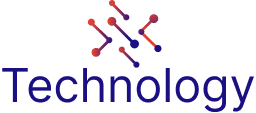

The promise of Massive Language Fashions (LLMs) to revolutionize how companies work together with their knowledge has captured the creativeness of enterprises worldwide. But, as organizations rush to implement AI options, they’re discovering a basic problem: LLMs, for all their linguistic prowess, weren’t designed to grasp the complicated, heterogeneous panorama of enterprise knowledge methods. The hole between pure language processing capabilities and structured enterprise knowledge entry represents one of the crucial vital technical hurdles in realizing AI’s full potential within the enterprise.
The Elementary Mismatch
LLMs excel at understanding and producing human language, having been educated on huge corpora of textual content. Nonetheless, enterprise knowledge lives in a essentially totally different paradigm—structured databases, semi-structured APIs, legacy methods, and cloud purposes, every with its personal schema, entry patterns, and governance necessities. This creates a three-dimensional downside house:
First, there’s the semantic hole. When a person asks, “What had been our top-performing merchandise in Q3?” the LLM should translate this pure language question into exact database operations throughout doubtlessly a number of methods. The mannequin wants to grasp that “top-performing” would possibly imply income, models offered, or revenue margin, and that “merchandise” might reference totally different entities throughout varied methods.
Second, we face the structural impedance mismatch. LLMs function on unstructured textual content, whereas enterprise knowledge is very structured with relationships, constraints, and hierarchies. Changing between these paradigms with out shedding constancy or introducing errors requires refined mapping layers.
Third, there’s the contextual problem. Enterprise knowledge isn’t simply numbers and strings—it carries organizational context, historic patterns, and domain-specific meanings that aren’t inherent within the knowledge itself. An LLM wants to grasp {that a} 10% drop in a KPI may be seasonal for retail however alarming for SaaS subscriptions.
The trade has explored a number of technical patterns to deal with these challenges, every with distinct trade-offs:
Retrieval-Augmented Era (RAG) for Structured Knowledge
Whereas RAG has confirmed efficient for document-based data bases, making use of it to structured enterprise knowledge requires vital adaptation. As an alternative of chunking paperwork, we have to intelligently pattern and summarize database content material, sustaining referential integrity whereas becoming inside token limits. This usually entails creating semantic indexes of database schemas and pre-computing statistical summaries that may information the LLM’s understanding of obtainable knowledge.
The problem intensifies when coping with real-time operational knowledge. In contrast to static paperwork, enterprise knowledge modifications continuously, requiring dynamic retrieval methods that stability freshness with computational effectivity.
Semantic Layer Abstraction
A promising method entails constructing semantic abstraction layers that sit between LLMs and knowledge sources. These layers translate pure language into an intermediate illustration—whether or not that’s SQL, GraphQL, or a proprietary question language—whereas dealing with the nuances of various knowledge platforms.
This isn’t merely about question translation. The semantic layer should perceive enterprise logic, deal with knowledge lineage, respect entry controls, and optimize question execution throughout heterogeneous methods. It must know that calculating buyer lifetime worth would possibly require becoming a member of knowledge out of your CRM, billing system, and help platform, every with totally different replace frequencies and knowledge high quality traits.
High quality-tuning and Area Adaptation
Whereas general-purpose LLMs present a robust basis, bridging the hole successfully usually requires domain-specific adaptation. This would possibly contain fine-tuning fashions on organization-specific schemas, enterprise terminology, and question patterns. Nonetheless, this method should stability customization advantages in opposition to the upkeep overhead of conserving fashions synchronized with evolving knowledge buildings.
Some organizations are exploring hybrid approaches, utilizing smaller, specialised fashions for question era whereas leveraging bigger fashions for consequence interpretation and pure language era. This divide-and-conquer technique can enhance each accuracy and effectivity.
The Integration Structure Problem
Past the AI/ML concerns, there’s a basic methods integration problem. Fashionable enterprises sometimes function dozens or tons of of various knowledge methods. Every has its personal API semantics, authentication mechanisms, charge limits, and quirks. Constructing dependable, performant connections to those methods whereas sustaining safety and governance is a major engineering enterprise.
Think about a seemingly easy question like “Present me buyer churn by area for the previous quarter.” Answering this would possibly require:
- Authenticating with a number of methods utilizing totally different OAuth flows, API keys, or certificate-based authentication
- Dealing with pagination throughout giant consequence units with various cursor implementations
- Normalizing timestamps from methods in numerous time zones
- Reconciling buyer identities throughout methods with no frequent key
- Aggregating knowledge with totally different granularities and replace frequencies
- Respecting knowledge residency necessities for various areas
That is the place specialised knowledge connectivity platforms develop into essential. The trade has invested years constructing and sustaining connectors to tons of of information sources, dealing with these complexities in order that AI purposes can concentrate on intelligence slightly than plumbing. The important thing perception is that LLM integration isn’t simply an AI downside, it’s equally an information engineering problem.
Safety and Governance Implications
Introducing LLMs into the info entry path creates new safety and governance concerns. Conventional database entry controls assume programmatic purchasers with predictable question patterns. LLMs, against this, can generate novel queries which may expose delicate knowledge in surprising methods or create efficiency points by way of inefficient question building.
Organizations have to implement a number of layers of safety:
- Question validation and sanitization to stop injection assaults and guarantee generated queries respect safety boundaries
- Consequence filtering and masking to make sure delicate knowledge isn’t uncovered in pure language responses
- Audit logging that captures not simply the queries executed however the pure language requests and their interpretations
- Efficiency governance to stop runaway queries that might impression manufacturing methods
The Path Ahead
Efficiently bridging the hole between LLMs and enterprise knowledge requires a multi-disciplinary method combining advances in AI, sturdy knowledge engineering, and considerate system design. The organizations that succeed shall be those who acknowledge this isn’t nearly connecting an LLM to a database—it’s about constructing a complete structure that respects the complexities of each domains.
Key technical priorities for the trade embody:
Standardization of semantic layers: We want frequent frameworks for describing enterprise knowledge in ways in which LLMs can reliably interpret, just like how GraphQL standardized API interactions.
Improved suggestions loops: Techniques should be taught from their errors, constantly bettering question era based mostly on person corrections and question efficiency metrics.
Hybrid reasoning approaches: Combining the linguistic capabilities of LLMs with conventional question optimizers and enterprise guidelines engines to make sure each correctness and efficiency.
Privateness-preserving methods: Growing strategies to coach and fine-tune fashions on delicate enterprise knowledge with out exposing that knowledge, presumably by way of federated studying or artificial knowledge era.
Conclusion
The hole between LLMs and enterprise knowledge is actual, however it’s not insurmountable. By acknowledging the basic variations between these domains and investing in sturdy bridging applied sciences, we are able to unlock the transformative potential of AI for enterprise knowledge entry. The options gained’t come from AI advances alone, nor from conventional knowledge integration approaches in isolation. Success requires a synthesis of each, creating a brand new class of clever knowledge platforms that make enterprise info as accessible as dialog.
As we proceed to push the boundaries of what’s potential, the organizations that put money into fixing these foundational challenges immediately shall be greatest positioned to leverage the following era of AI capabilities tomorrow. The bridge we’re constructing isn’t simply technical infrastructure—it’s the inspiration for a brand new period of data-driven determination making.

